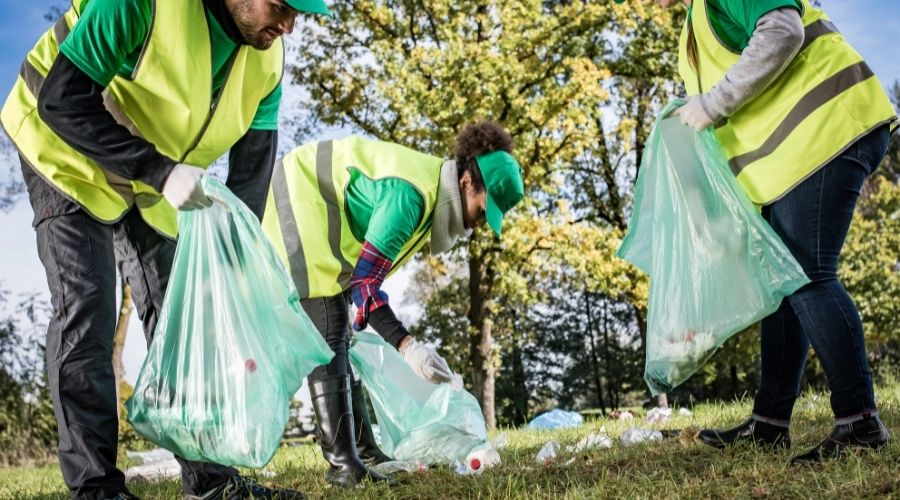What is considered biohazardous that must be cleaned up by a pro?

A waste is considered a biohazard by pros if the waste contains infectious materials that threaten human lives and the environment. This waste can be generated from hospitals, schools, offices, industries, laboratories, etc., biohazard infectious materials, including blood, pathogens, bacteria, and body fluids. Other examples are organic materials found on used tissues and swabs.
Here are some types of biohazardous waste:
- Solid Biohazardous Waste
A waste is considered a solid biohazard waste if it contains no sharp material. This website can be human or animal specimens and traceable on Petri dishes, towels, personal protective equipment, pipettes, and linens. The first thing is to separate these sharp materials such as needles, scalpels, and other breakable materials from the waste.
How to Dispose of Solid Waste
Health practitioners dispose of solid waste in a designated container made up of an autoclave bag.
The bag is labeled with a biohazard symbol to avoid mistakes. The waste is decontaminated by autoclaving on the site where the waste is collected. After decontamination, the waste is disposed of as regular biohazard waste on an approved site.
The waste management company is also tasked with collecting these biohazard waste and decontaminating them if the health professional does not decontaminate the waste on-site. However, the waste management company also has an approved standard for disposing of such waste.
- Liquid Biohazardous Waste
As the name implies, liquid biohazard waste is any liquid such as blood or body fluid that contains harmful substances. Liquid biohazard waste is considered and disposed of as solid waste if it’s less than 25 milliliters. However, anything over 25 milliliters demands a different type of disposal method.
How to Dispose of Liquid Waste
These biohazard liquid wastes are disposed of in leak-proof containers. The container is airtight to avoid leakage, and it’s also labeled a biohazard waste.
The collected waste is sometimes placed in another container for extra security.
Liquid waste can be disposed of by adding bleach or using the autoclave method except in the presence of blood fluid or chemicals.
Healthcare personnel must collect any liquid biohazardous waste in leak-proof containers. They must secure the container, so it doesn’t tip over and label the container as a biohazard.
Personnel can place the liquid containers in a secondary container for extra security, like a tray or bucket.
- Sharp Biohazardous Waste
Sharp biohazard waste contains sharp materials. These materials can puncture the skin, plastic bags, and other feeble materials, including needles, microscope slides, and broken glasses.
How to Dispose of Sharp Waste
There are specific containers for disposing of sharps biohazard waste. These containers are rigid, leak-proof, and safe to handle.
The container should be labeled as biohazard waste before putting sharp biohazard waste. There are also containers to pick up contaminated sharps designed to hold sharp biohazard waste.
According to regulation, this waste should be collected into those containers and disposed of according to regulation.
BIOHAZARD SAFETY LEVELS WITH EXAMPLES
There are 4 levels of biohazards
- Biohazard Level 1: has a lesser infect on humans and the environment. Such as E. coli, Bacillus subtilis, and Naegleria gruberi.
- Biohazard Level 2: pose severe harm to humans and is transmitted to contact such as HIV, hepatitis B, and salmonella.
- Biohazard Level 3: are airborne and cause chronic diseases such as tuberculosis and Coxiella burnetii.
- Biohazard Level 4: threatens life and has no cure yet, such as Ebola virus and Lassa virus.
Contact our office for all crime-scene clean-up
More Tips:
- How Much Does a Hoarder House Cleanup Cost?
- What is a hazmat cleanup?
- How to Save Money on a Hoarder House Cleanup
- How are Toxic Chemicals are Disposed
- When to Call a Professional
- 5 Questions to Ask a Medical Pickup Company
- When to Hire an Odor Removal Professional
- What is Required for Crime Scene Clean-up
- What Does a Crime Scene Cleaner Do?
- What happens if you clean up hazardous material yourself?
- How do Crime Scene Cleaners Handle the Ground?

